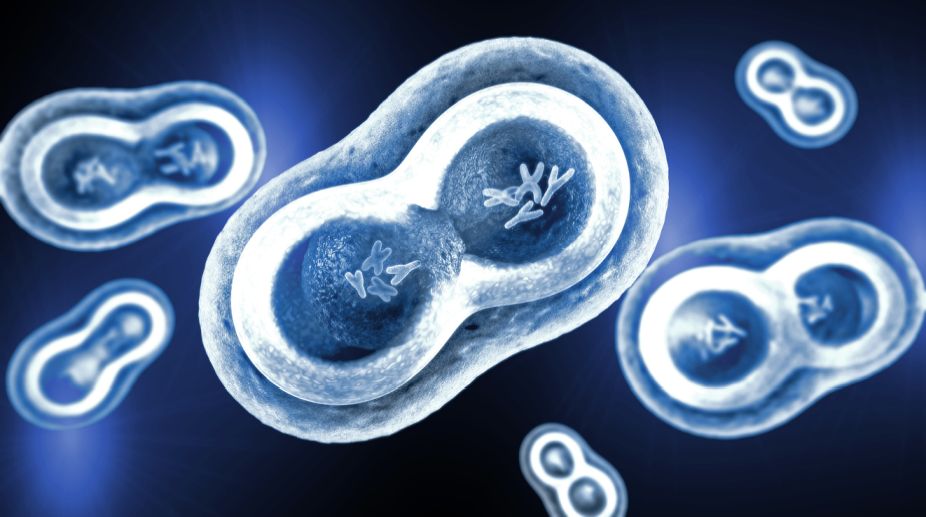Splitting and pairing up
Breaking the rule of two is found to make genetics go berserk.

(Photo: Getty Images)
After meiosis I has been completed, a brief interphase may intervene before meiosis II begins. However, this interphase is not accompanied by DNA replication because each chromosome already consists of a pair of replicated, sister chromatids that had been generated by DNA synthesis during the interphase preceding meiosis I. So DNA is replicated only one time, and that is prior to the first meiotic division.
The purpose of meiosis II, like that of a typical mitotic division, is to parcel the sister chromatids created by this initial round of DNA replication into two newly forming cells. As a result, meiosis II is sometimes referred to as the separation division of meiosis.
On the other hand, prophase II is very brief. If detectable at all, it is much like a mitotic prophase. Metaphase II also resembles the equivalent stage in mitosis, except that only half as many chromosomes are present at the spindle equator.
Advertisement
The kinetochores of sister chromatids now face in opposite directions, allowing the sister chromatids to separate and move (as new daughter chromosomes) to opposite spindle poles during anaphase II. The remaining phases of the second meiotic division resemble the comparable stages of mitosis. The final result is the formation of four daughter cells, each containing a haploid set of chromosomes. Because the two members of each homologous chromosome pair were randomly distributed to the two cells produced by meiosis I, each of the haploid daughter cells produced by meiosis II contains a random mixture of maternal and paternal chromosomes.
Moreover, each of these chromosomes is composed of a mixture of maternal and paternal DNA sequences created by crossing over during prophase I. While each of the cells produced by meiosis normally contains a complete, haploid set of chromosomes, a rare malfunction called nondisjunction can produce cells that either lack a particular chromosome or contain an extra chromosome. Nondisjunction refers to the failure of homologous chromosomes (during anaphase I) or sister chromatids (during anaphase II) to separate from each other at the metaphase-anaphase transition. Instead, both chromosomes or chromatids, remain together and move into one of the two daughter cells, thereby generating one cell containing both copies of the chromosome and one cell containing neither copy.
The resulting gametes have an incorrect number of chromosomes and tend to produce defective embryos that die before birth. However, a few such gametes can participate in the formation of embryos that do survive. For example, if an abnormal human sperm containing two copies of chromosome 21 fertilises a normal egg containing one copy of chromosome 21, the resulting embryo, possessing three copies of chromosome 21, can develop fully and lead to the birth of a live child. But this child will exhibit a series of developmental abnormalities -including short stature, broad hands, folds over the eyes, and low intelligence – that together constitute Down syndrome.
The amount of DNA present at various stages is indicated using the C value, which corresponds to the amount of DNA present in a single (haploid) set of chromosomes. In a diploid cell prior to S phase, the chromosome number is 2n and the DNA content is 2C because two sets of chromosomes are present. When DNA undergoes replication during S phase, the DNA content is doubled to 4C because each chromosome now consists of two chromatids.
In meiosis I, segregation of homologous chromosomes into different daughter cells reduces the chromosome number and the DNA content from 4C to 2C. Sister chromatid separation during meiosis II then reduces the DNA content from 2C to 1C while the chromosome number remains constant.
In contrast, a normal mitosis reduces the DNA content from 4C to 2C (by sister chromatid separation) while the chromosome number remains at 2n.
(The writer is associate professor, head, department of botany, ananda mohan college, kolkata, and also fellow, botanical society of bengal, and can be contacted at tapanmaitra59@yahoo.co.in)
Advertisement